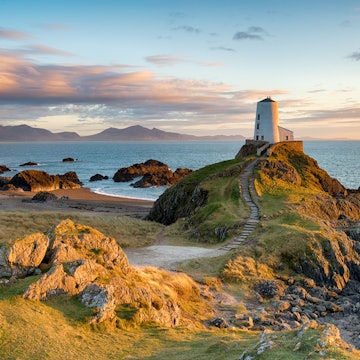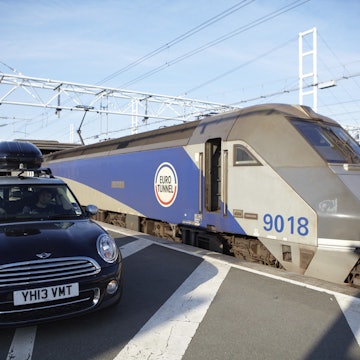
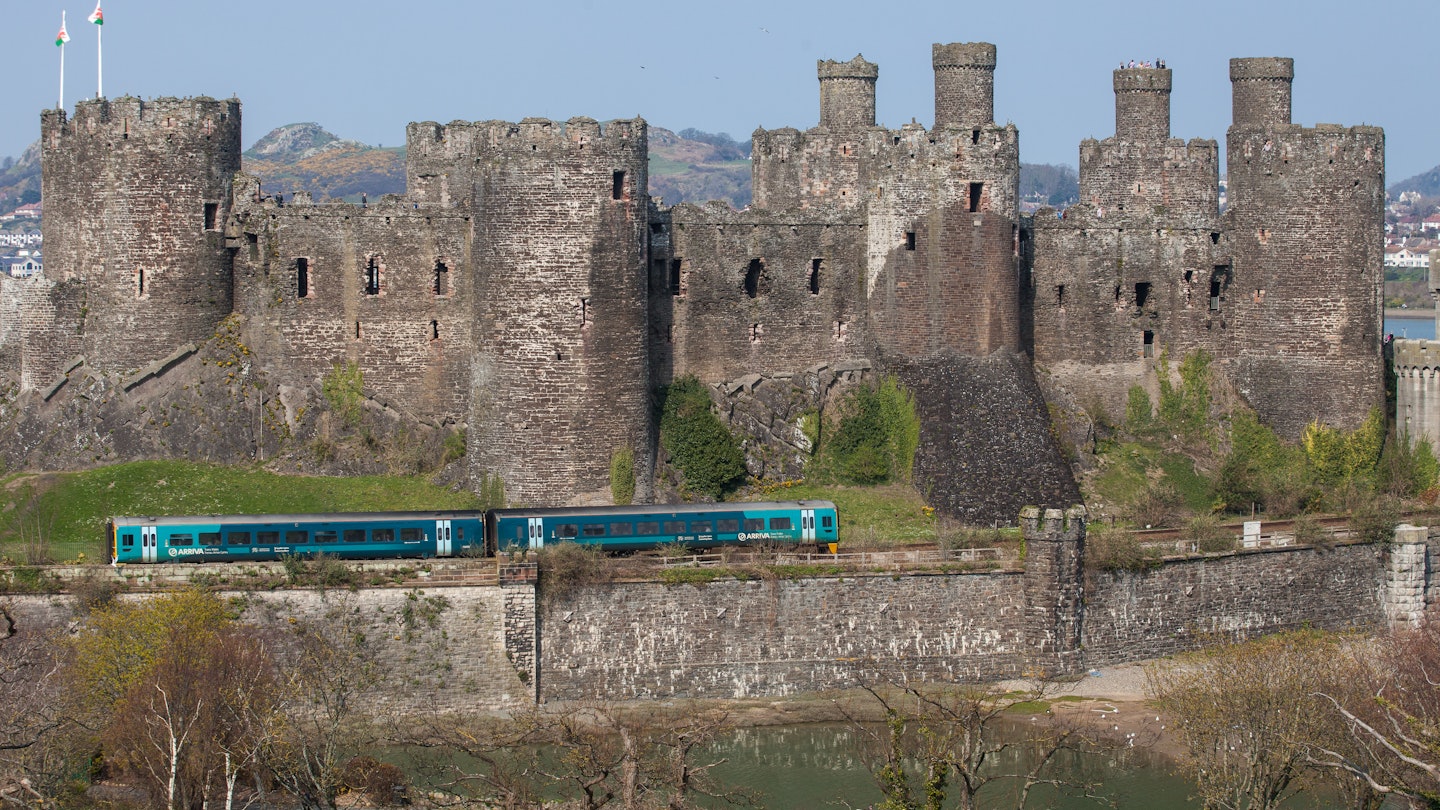
From budget train and bus transportation passes to finding the perfect cross-country cycle route, here are the best ways to travel around in Wales © wcjohnston / Getty Images
Wales is made for lovers of the great outdoors, and many of its most scenic travel routes are best explored on foot or by bike. The 870-mile (1400 km) Wales Coast Path winds its way around the entire Welsh coast – a world first when it launched in 2012 – and the country’s rural heart is crisscrossed with off-road cycle routes and quiet country lanes.
Traveling the country by public transportation is entirely possible with a little patience and planning. Buses and trains are generally comfortable and efficient, but you're likely to find driving your own set of wheels more convenient if you’re hoping to pack lots in or venture to Wales’ wildest parts. Here are our top tips for getting around in Wales.

Trains are efficient but expensive
Traveling Wales by train is an increasingly comfortable and efficient option – often enhanced by sweeping views of plunging valleys and glittering shores – but tickets can be pricey, and journeys relatively slow.
Most rail services are run by Transport for Wales. Book direct or use Trainline or Split My Fare to search for alternative routes and fares. For long-distance trips, aim to book a couple of months in advance for the best price. The network is reasonably extensive along the south and north coasts and the South Wales valleys, but trains heading between north and south Wales always cut across the border with England, with key changes occurring in the English towns of Shrewsbury and Chester.
If you're planning to take a few long-distance train trips, look into the UK’s railcard system, which offers various concessions. An annual railcard typically costs £30, which you can often make back in just a few discounted journeys.
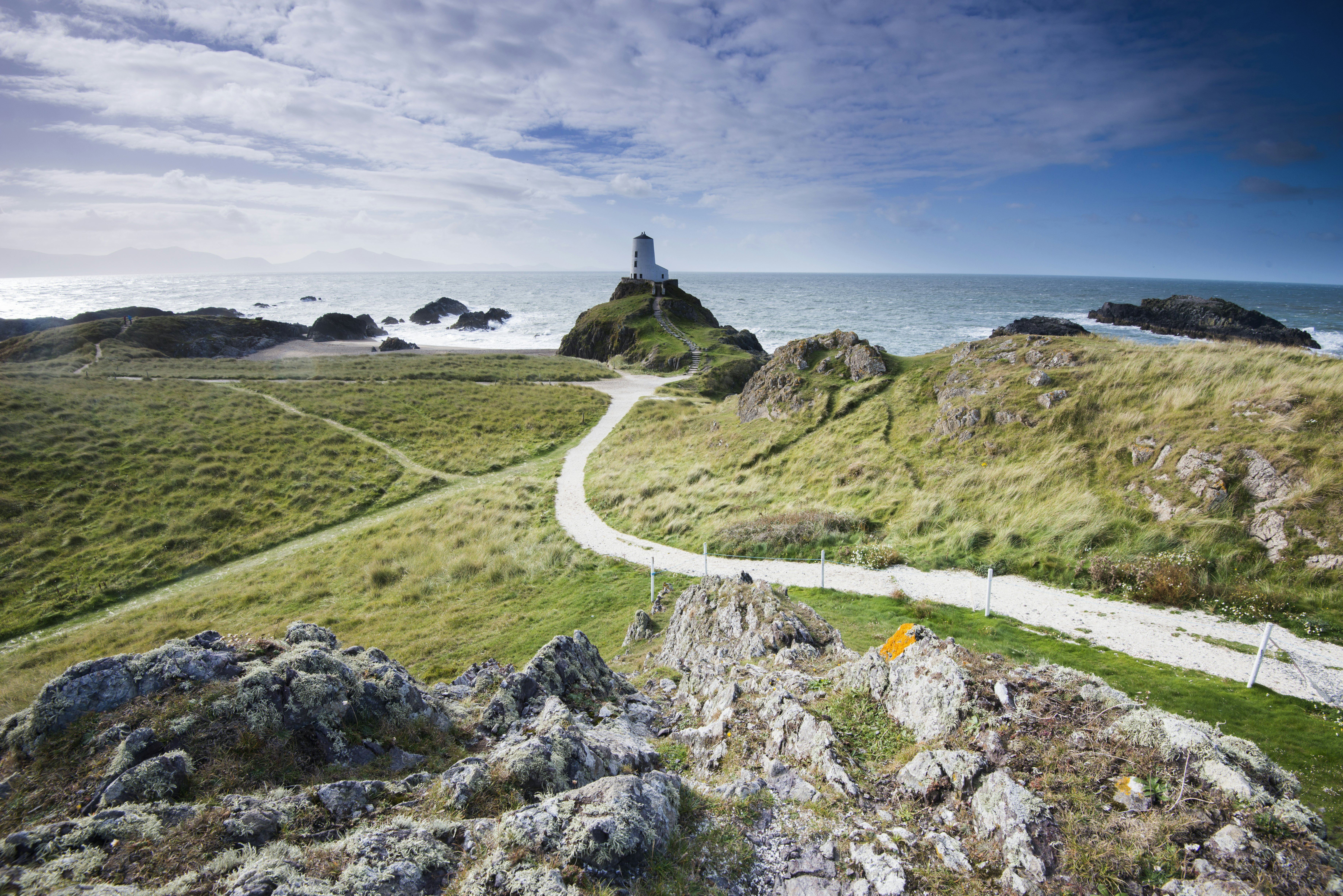
Buses are perfect for travel to more remote towns and villages
If you plan on getting to some of Wales’ more remote corners by public transport, trains can only get you so far. Regional buses regularly traverse the more rural areas, though services can be limited on weekends. A whole host of private companies operate throughout the country; sift through your options using the journey planner from Traveline Cymru. Contactless payments and ticketing apps are becoming more popular, but if you’re paying by cash, it’s always wise to bring exact change.
Many local bus providers offer day or multi-day bus passes, which are often more affordable than buying numerous single or round-trip journeys. Do your research if you want to save a little extra.
Long-distance buses (known as coaches) run between major towns and cities and should be booked in advance. They’re generally the cheapest option but can be incredibly slow, especially if you’re heading between the north and south, which usually involves a change at Birmingham. Check for timetables and tickets with National Express.
Buy an Explore Wales Pass for unlimited rail and bus travel
Offering four days of unlimited rail and bus travel within an eight-day period (on selected operators), the Explore Wales Pass is a budget-friendly way to take in some of the country’s highlights. There are some restrictions; for example, you’ll need to avoid commuter-heavy early morning train services from Monday to Friday on some routes. But with a little planning, you can take in Snowdonia’s soaring peaks, Pembrokeshire’s pristine beaches, Cardiff’s epic nightlife, and more, in just over a week.
Sticking to a smaller area? Regional passes with similar benefits are also available.

Car and motorcycle journeys offer maximum flexibility
If you want to get far off the beaten track or see as much of Wales as possible in a short space of time, traveling by car or motorcycle is your best option.
While North and South Wales are well developed in terms of road infrastructure, the more rural areas often consist of narrow single-track lanes and windy roads with blind corners galore. Pair this with lashing rain or sheep-induced traffic jams and you can expect to travel very slowly indeed.
If you’re traveling the length of Wales, it may be easier to dip into England to shoot up the highway, but crossing the rugged mountain ranges and valleys of Mid-Wales is far more memorable – just bring anti-nausea medication if you get travel sick.
Want to road trip in the most sustainable way possible? The country’s compact size makes Wales ideal for journeys by electric vehicle. There are hundreds of charging stations across the country (see Zap Map for more details), and many heritage sites and attractions have dedicated EV charging points, so you can sightsee while your car charges up for the next leg of the journey.
Rental cars can be expensive, so use comparison sites and book in advance to find the best deals.
Taxis are readily available in Cardiff
Ride-hailing apps like Ola and Uber – as well as plentiful local “Dragon Taxis” – are available in the Welsh capital, Cardiff. In other big towns, there’s usually a taxi rank outside the train station. Elsewhere, you might need to call to book. Ask locally for taxi company recommendations.
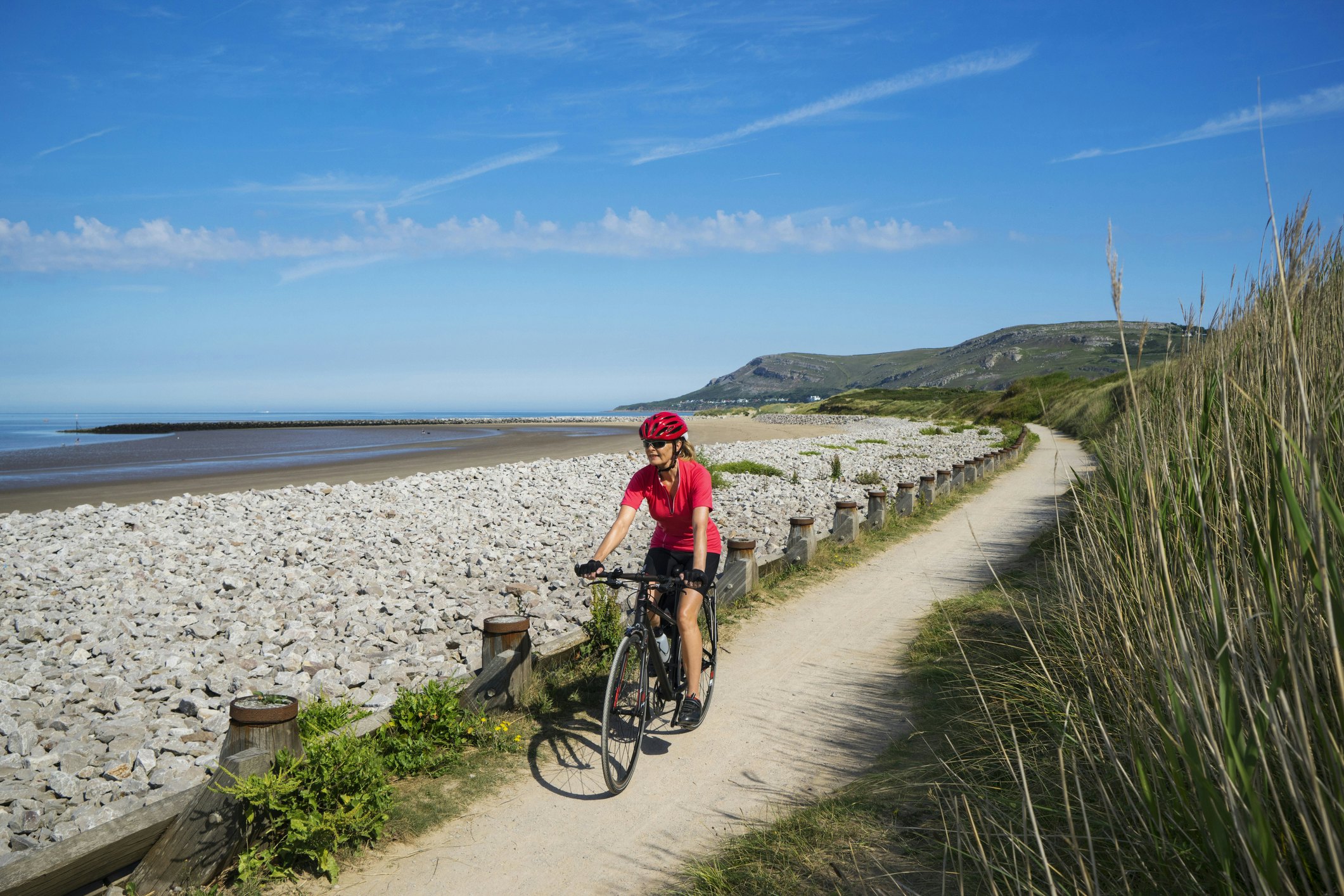
There are many wonderful cycling routes
Wales is home to some of the UK’s most spectacular cycling routes, whether you’re looking for family-friendly jaunts or tough long-distance trails. Short, easy routes include the Bay Trail in Cardiff and the canalside path between Llangollen and Pontcysyllte Aqueduct, while experienced hill climbers and Geraint Thomas wannabes will be spoiled for choice in the Brecon Beacons and Snowdonia National Park.
If you can handle thigh-burning ascents and unforgiving weather conditions, there are plenty of long-distance routes to choose from. Heck, you can even pedal the length of Wales if you want to. Check out the Sustrans' National Cycle Network to get planning.
Most large towns have at least one bike rental shop if you don't have a bike of your own. Bike-sharing schemes are available in Swansea and Cardiff, and bike lanes are constantly expanding, but the cities still aren’t super bike-friendly. Always wear a helmet and high-visibility clothing.
Take a seasonal boat ride to offshore islands
Seasonal tourist boats shuttle passengers to offshore islands, such as Caldey Island or Bardsey Island, but there are no ferry services between Welsh ports.
Go by plane between Cardiff and Anglesey
The only domestic flights in Wales run between Cardiff and Anglesey and take around 50 minutes.
Accessible transportation in Wales
Public transport vehicles in Wales are reasonably set up for passengers with accessibility needs, with designated seating, wheelchair space, and access ramps. If traveling by train, it’s best to call Transport for Wales in advance if you require assistance in the station, though staff (and friendly locals) will always help where they can. You could be eligible for discounted travel depending on your disability, so check with your chosen transport provider to find out more.
You might also like:
Top 13 things to add to your Wales trip itinerary
The best time to visit Wales for food, hiking or bog snorkeling
Whether it's cloudy or sunny, you can still enjoy these best beaches in Wales
















